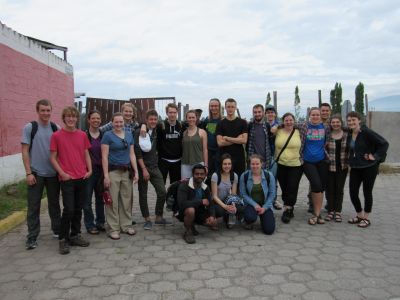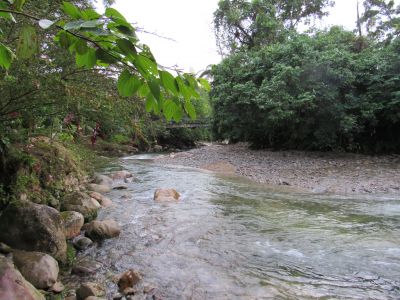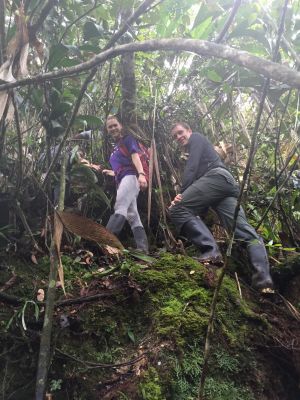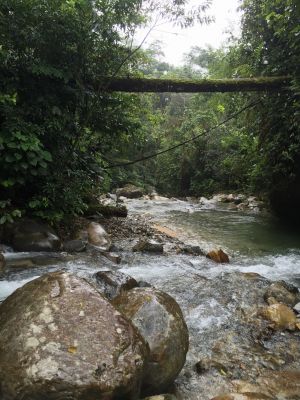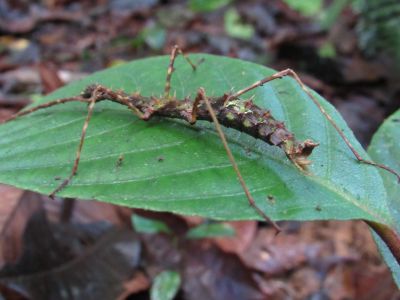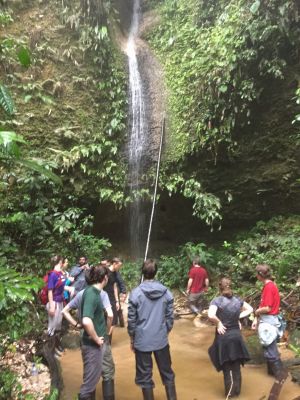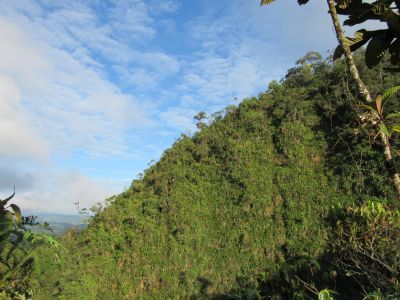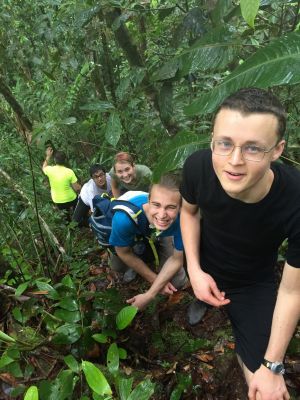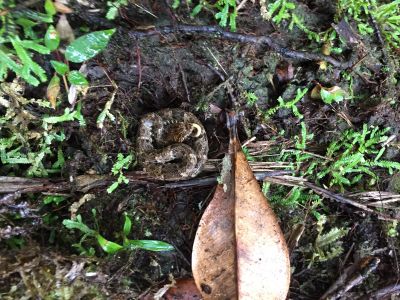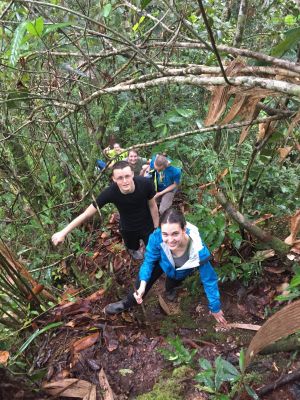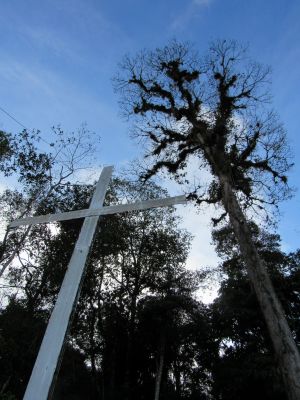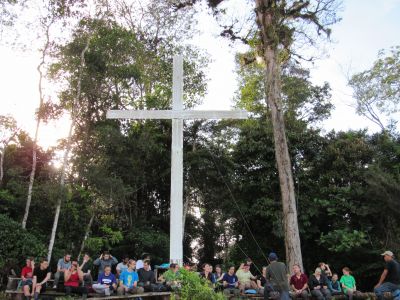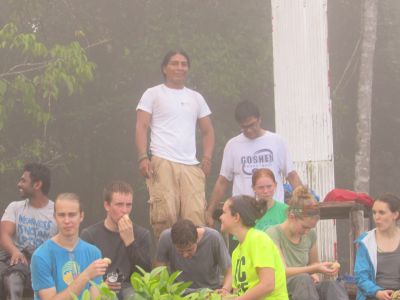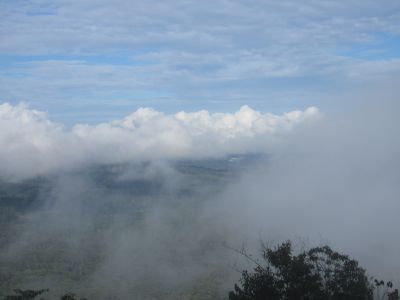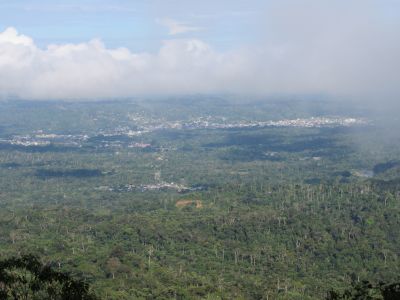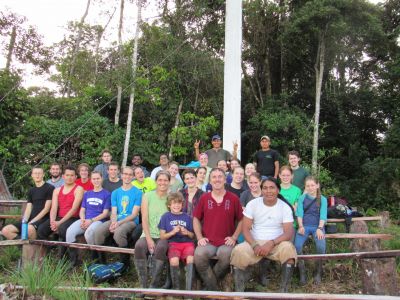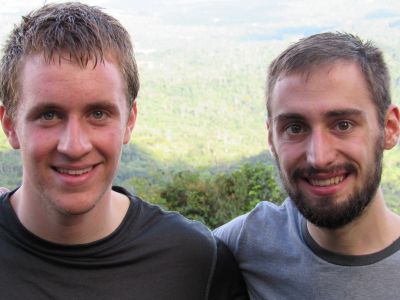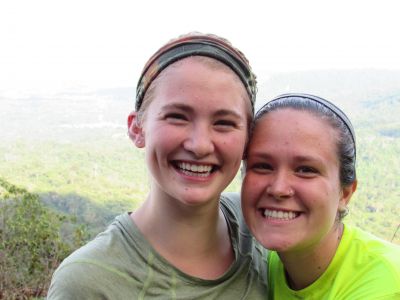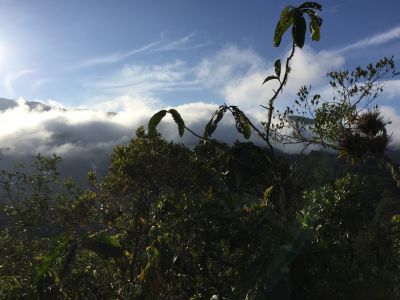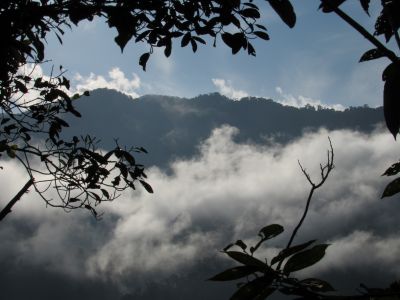The Amazon River gets filled by tributaries like the Lupi, a clear creek that runs next to our home for this first week in the rain forest. We arrived here just in time for a quick swim — then dinner and some well-deserved rest. The women in the group are staying in Barbasco Cabin, named after the plant that native Kichwas traditionally use to stun fish. The men are in Guayusa Cabin, a plant used to make a local tea we’ve been enjoying daily.
The next day began in the classroom, a rented space in a nearby church, where the course topic — ecological economics — was introduced. The students received their first reading, their first assignment, and their first chance to think about their group projects. In the afternoon we climbed a nearby mountain named Chuta to get a view of the valley below. The hike was strenuous and satisfying. It was also thrilling — our first wildlife sighting was a young Shishi snake sleeping at the edge of the trail. Fortunately, reptiles like these are active at night and most of the students passed by without disturbing it. When it finally arose from its nap, one of our guides, Nixon, gingerly led the snake off the trail with a stick and we proceeded on our way.
The jungle here is rich in vegetation and the views from the top of the mountain were absolutely stunning. We settled into benches placed beneath a huge cross so we could take it all in. Chunks of sugar cane were handed out. Then, before our very eyes, we watched as the clouds parted and the city of Tena emerged far below.
Our Kichwa guide, Jerson, explained that his people believe that the forest has spirits, both female and male, and that the spirits must have been pleased with our visit. We were more than pleased — there is nothing like climbing a mountain to get the blood flowing and leave the problems of the city far behind. On this first jaunt deep into the jungle we were blessed by the beauty of creation and the safety afforded our group of twenty-one eager adventurers, the faculty family and our capable guides.





